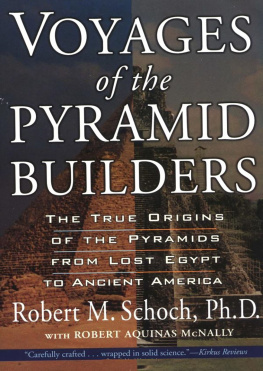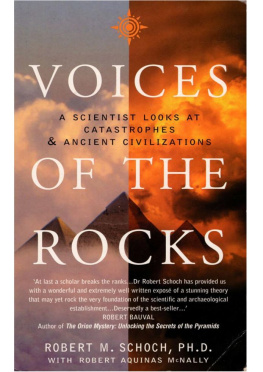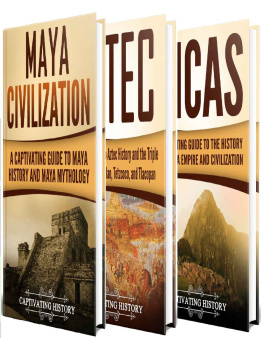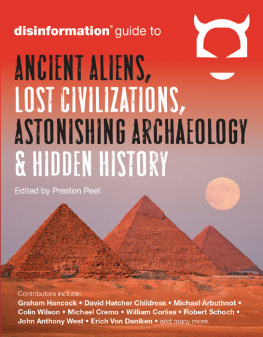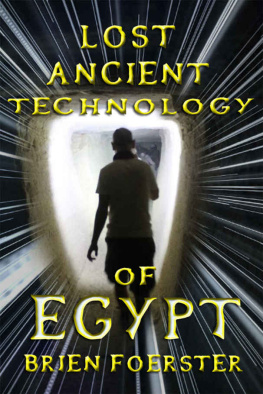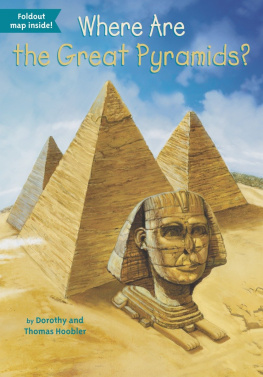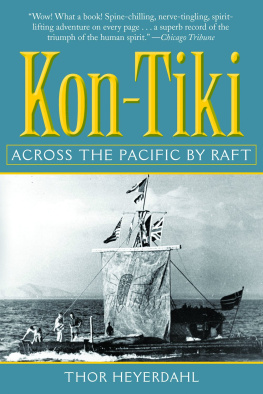Table of Contents
Also by Robert M. Schoch, Ph.D.,
with Robert Aquinas McNally
VOICES OF THE ROCKS
ROBERT M. SCHOCH, PH.D. with ROBERT AQUINAS McNALLY
Jeremy P. Tarcher/Penguin a member of Penguin Group (USA) Inc. New York
Most Tarcher/Penguin Books are available at special quantity discounts for bulk purchase for sales promotions, premiums, fund-raising, and educational needs. Special books or book excerpts also can be created to fit specific needs. For details, write Penguin Group (USA) Inc. Special Markets, 375 Hudson Street, New York, NY 10014.
Jeremy P. Tarcher/Penguin
a member of
Penguin Group (USA) Inc.
375 Hudson Street
New York, NY 10014
www.penguin.com
First trade paperback edition 2004
Copyright 2003 by Robert M. Schoch, Ph.D., with Robert Aquinas McNally
eISBN : 978-1-585-42320-0
http://us.penguingroup.com
Robert M. Schoch dedicates this book
to his parents,
Milton and Alicia Schoch,
and to his parents-in-law,
Robert and Anne Pettit.
Robert Aquinas McNally dedicates this book
to Gayle Eleanor:
Doch immer mein Ewig-Weibliches.
Introduction
BY CONVENTIONAL THINKING, THE SO-CALLED RMCHI mummies are badly out of place. Discovered in the Takla Makan Desert of northwestern China, one of the driest, saltiest parts of Central Asia, and now housed farther north in the Provincial Museum of rmchi, these naturally preserved remains show what humans in that part of the world looked like between 2000 and 1000 B.C. The mummies are in an excellent state of preservationthe accidental result of winter burials in salty soil, which dried the bodies and protected them against the usual processes of decaybetter in fact than Egyptian mummies embalmed at the same time. Curiously, the rmchi mummies wear brilliantly colored, well-made textiles that have no resemblance to Asian fabrics. Even more surprising are their facial features: round eyes, large noses, red or blond hair, and tall bodies. Both the fabrics and the remains suggest a tribe related to Europes Celts. But what are people connected with the ancestors of the modern Irish, Scots, and Welsh doing in this far corner of Asia?
rmchis evidence is startling since it undercuts our ready division of cultures into European and Asian. Here is a people of European provenance buried in what is clearly an Asian cultural zone. Yet there is a way we can accept even this, simply because the link between rmchi and the Celtic heartland of the Caucasus lies overland. It is generally accepted that the Celts arose in the Caucasus Mountains, migrated westward into the Balkans and Central Europe, then into France, northern Spain, Ireland, and Britain. The rmchi mummies argue that some of them went eastward as well, settling in what is now China. Somehow we find it easy, if unconventional, to imagine these ancient sheepherders driving their flocks over deserts and mountains toward the rising sun in search of new, greener pastures.
But what if an ocean separated two ancient areasone in the Old World of Europe, Asia, and Africa and another in the New World of North and South Americawith human cultures that bear an uncanny resemblance to each other? By intellectual convention, we would assume that the similarity had to be coincidence. After all, arent the two worlds just thatseparate worlds? And besides, until Columbus navigated his three small ships across the Atlantic, Europeans and Native Americans supposedly knew nothing of each others existence (with the exception of a brief contact between Norse and Native Americans circa A.D. 1000). According to the prevailing model of history, people on both sides of the Atlantic before Columbus lacked the drive to attempt a transoceanic journey and the competence to survive it.
This point of view, which has long dominated our way of thinking about the past, runs against a growing body of evidence that ancient peoples crossed the seas between the Old and New worlds many centuries prior to Columbus. They carried with them the ideas, tools, and elements that grew into what we call civilization. And this pattern of cross-cultural and intercontinental travel reaches far back, well into prehistory. In fact, it explains one of the most intriguing enigmas of the ancient worldthe presence of pyramids in Africa, Asia, and both North and South America.
As much as they symbolize the mystery and magic of Egypt, pyramids are not uniquely Egyptian. Pyramids also appear in the ancient African kingdom of Kush, along the Nile between the third and fourth cataracts; as ziggurats in ancient Mesopotamia and Sumeria (the likely source of the biblical account of the Tower of Babel); in England and Ireland, taking such forms as Silbury Hill and Newgrange; in India and throughout Southeast Asia, in the distinct style of the Buddhist stupa; at Angkor Wat in medieval Cambodia; at Indonesias Borobudur; in ancient China; at Teotihuacn, Tenayuca, Tenochtitln, and other sites in the Valley of Mexico; in the ancient Olmec and Mayan realms of southern Mexico, Guatemala, Honduras, Belize, and El Salvador; in North America along the Mississippi at Cahokia and other ceremonial centers; and in Perus coastal region, among the people who were the ancestors of the Inca empire, and in that countrys northern Andes, the Inca heartland.
How can it be that a form as distinctive and powerful as the pyramid was built in such widely separated locales? It seems too much to believe that the worlds many pyramids are the product of coincidence and convergence. Could it be that they share a common ancestor long lost to history, a primordial pyramid-building civilization that once navigated the seas and spread its way of life around the globe? Are theylike the modern Irish at one extreme and the startling mummies of rmchi at the otherevidence of migration from a single, ancient, and now-forgotten source?
Ever since I became involved in studying the Great Sphinx of Gizaa research project described in my earlier book Voices of the Rocks and updated in the appendix of this volumeI have pursued evidence suggesting that relatively sophisticated civilizations arose earlier than generally recognized. Some of these early civilizations apparently possessed high levels of astronomical knowledge and navigational expertise, giving them the ability to navigate across open sea. This evidence further suggests that the history of civilization is not a tale of slow, gradual, progressive change from primitive to sophisticated. Rather, history comprises a series of starts and stops, rises and falls. Periods of equilibrium, growth, and progress are interrupted, often suddenly, by natural catastrophes. Catastrophes can take many formsvolcanic eruptions, earthquakes, widespread floods, profound climate change, the spread of new diseases. The most devastating and far-reaching catastrophes of all, though, have come not from the earth itself but from the skies, in the form of cosmic run-ins with cometsexperiences preserved in the religious mythology of skies turned vengeful and dangerous by angry gods who scorched the earth with the fire of heaven.
No structures that have survived from antiquity better embody the fascinating reality of civilizations rises, falls, and spread in response to celestial catastrophe than the pyramids. They are striking evidence of earths long-lost protocivilization, the physical remains of the deepest taproot of the cultural, social, and technological inheritance from which our modern way of life draws its energy.

